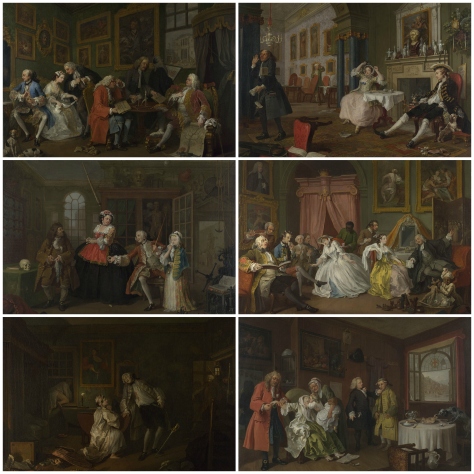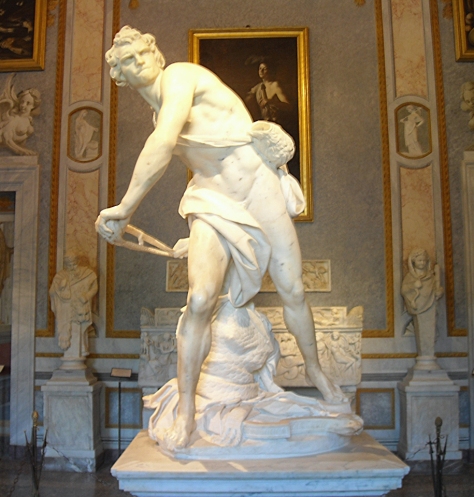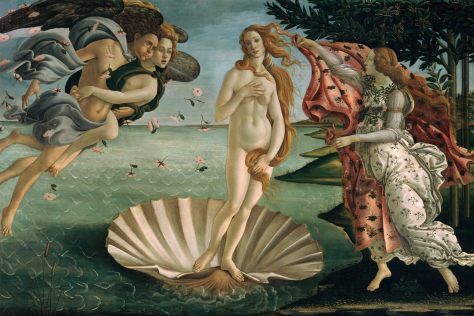The 18th century saw the growth of economic and social power of the middle class. One of the main causes of this increase of influence is the Age of Enlightenment, which “is an era from the 1650s to the 1780s in which cultural and intellectual forces in Western Europe emphasized reason, analysis, and individualism rather than traditional lines of authority” (wikipedia). According to history.com, “the Enlightenment produced numerous books, essays, inventions, scientific discoveries, laws, wars and revolutions” which led to the advancement and solidification of the middle class. While the arts where not too heavily impacted by the scientific advancements of the Enlightenment, “they were, nevertheless, quite rich and varied, reflecting the increasing wealth, widening perspectives, and rising technical proficiency of European life” (history-world). Many artisans began to focus less on aristocrats as a consumer base, and started to focus instead on appealing to the middle class. The middle class had much different demands than the artisans did, so art, music, and theater saw dramatic changes.
Music
At the start of the century, music was being created for an aristocratic consumer base, and had a “gallant” style (Classical Music). However, the increasing amount of public concerts saw an increasing demand from the middle class for easily recognizable and accessible music, and as the composers continued to distance themselves from aristocratic consumers the music focused less on complexity and more on melody.
Visual Art
Some artists, such as William Hogarth, even went as far as to openly satirize the aristocratic class that had previously employed them. The middle class had suffered under the aristocracy for long enough, and had become vastly disillusioned. A large portion even hated the ruling class, and tensions were high. These tensions allowed works of art like Hogarth’s Marriage à-la-mode, pictured above, to flourish. This six piece series was worked on from 1743 to 1745 and “was the first of Hogarth’s satirical moralising series of engravings that took the upper echelons of society as its subject” (Marriage A-la-Mode). The series begins with an illustration of a poor Earl marrying off his son to the daughter of a wealthy city merchant, and is already having his new house built. The series ends with the son’s murder and the daughter’s suicide.
Theater
According to Neil Grant of Sterling Publishing Company, the most fundamental change to theater in the 18th century “was in the nature of its audience. Theater ceased to be stylized court entertainment or knockabout peasant fun and became more concerned with the lives of its new, middle-class audience. It was more politically aware, and more realistic.” The Beggar’s Opera, a small clip of which can be found above, was the first and most successful instance of Ballad Opera, which took melodies that would be familiar to the mainstream audience and changed the lyrics to provide social commentary.
“Age of Enlightenment.” Wikipedia. Wikimedia Foundation. Web. 6 Mar. 2015.
The Beggar’s Opera. YouTube, 2007. Film.
“Classical Music.” Art/mus/thr F2000. UAF, 24 Apr. 2009. Web. 6 Mar. 2015.
“Enlightenment.” History.com. A&E Television Networks, 2009. Web. 6 Mar. 2015.
Lewis, Hackett. “The European Dream Of Progress And Enlightenment.” The Age of Enlightenment. 1 Jan. 1992. Web. 6 Mar. 2015.
“Marriage A-la-Mode: 1, The Marriage Settlement.” William Hogarth. The National Gallery. Web. 6 Mar. 2015.
Mozart – Requiem. YouTube, 2009. Film.
Neil Grant – History of Theatre 2002 Sterling Publishing Co. , London



